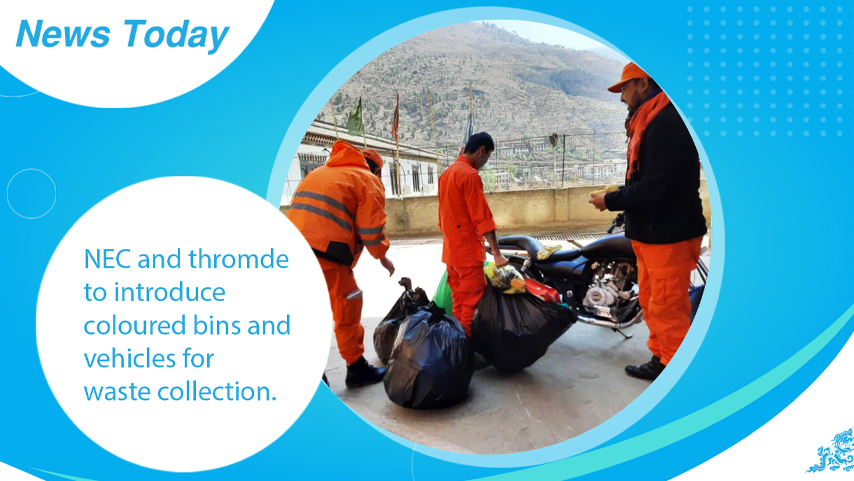




Used sanitary pads, discarded facemasks, bloodstained bandages, vegetables and fruit peels all came in a bin of a house in Changzamtok. This is the finding of the social experiment on waste conducted in Changzamtok, Thimphu by the Gross National Happiness Commission, National Environment Commission (NEC), United Nations Development Programme (UNDP), and Thimphu thromde from March to April. The experiment was carried out as managing household wastes has become more challenging in urban areas like Thimphu in recent years. According to the waste inventory 2019, household waste accounts for 40 to 50 percent of the total waste generated. UNDP’s head of experimentation accelerator lab, Kunzang Wangmo, said the area was chosen for the experiment due to the huge and diverse population and also the issue of waste is rampant in Changzamtok. The experiment involved 600 household randomly identified from the 7,000 households in Changzamtok, where 200 households were just left without any information, another 200 households were provided with three coloured bins and waste information, and 200 households were provided with three coloured bins, information, and feedback about their waste generation and management. Kunzang Wangmo said that the initial ethnographic research revealed people did not have knowledge about hazardous waste, some could not afford coloured bins, and segregation and collection was a problem. In the current practice, only dry waste is recycled and others are disposed of in the landfill. She said that if agencies introduced three coloured bins, red (hazardous), green (wet), blue (dry), people might segregate. Residents, however, complained that even if they segregate the waste, all wastes are collected in the same vehicle at the same time, making their segregation futile. Meanwhile, NEC and thromde plans to introduce three coloured bins and also coloured vehicles for waste collection. For the experiment, which ended on April 10, 62 volunteers and five environment inspectors were engaged for a week. Once the wastes were collected from the identified households, the different kinds of wastes were weighed and then segregated into wet, dry, and hazardous. There were eight sorting sites in Changzamtok. A volunteer said that in the beginning, waste segregation task was daunting but with awareness, people were willing and careful. “People lacked awareness about hazardous waste,” he said. Thromde environment inspector, Ugyen Penjor, said that if the trial was successful, there were opportunities for replication in other areas to manage waste problems in the country. “We found that if there is proper collection time, people are willing to segregate and take care of their wastes.” Kunzang Wangmo said that the social experiment was carried out to provide key insights from the citizens and households while rolling out the waste flagship programme. “The approach provides a structured and robust method in understanding households’ values, beliefs and individuals’ attitude towards waste, to help identify favorable attributes to nudge households to segregate waste at source.” Waste management as a flagship programme proposes integration of the circular economy and a targeted intervention of reducing landfill waste disposal from over 80 percent to less than 20 percent by the end of 2030.
